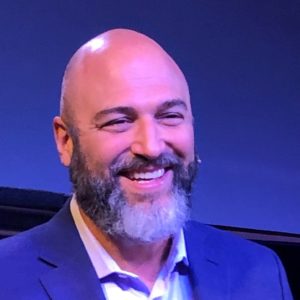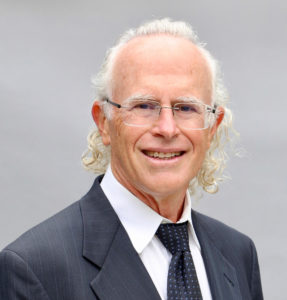‘The apprentice’: Long-term care CEO edition
It could be said that succession is similar to a track meet. While the runners’ speed is important, the critical factor in success is the handoff of the baton. In organizations, handoff often means movement from one generation or style of leader to another. It can also mean shifting confidence and adjustment in culture, which can be critical to an organization’s ongoing success.
This article will explore the traditional ways organizations, particularly nonprofits, have managed change in leaders and then share a different idea that might be preferable when an explicit line of succession is absent.
TRADITIONAL PROCESS
Historically, when boards of directors/trustees have been faced with changing the chief executive officer (CEO), one of two tracks has been followed. The first is a defined line of succession where persons in subordinate roles have been groomed to advance. Generally speaking, this track has led to continuity in leadership, which could be either good or bad.
On the good side, if the departing CEO was in tune with the times and, to the best of his or her ability, had strategically positioned the corporation harmoniously with stakeholders (residents, funding systems, employees, community leaders), in all likelihood, continuing what the organization had been doing would provide stability and opportunity for the new leader’s success.
On the other hand, if the departing CEO was content with maintenance and solely sought to meet the daily challenges to keep the organization alive, a successor with the same mentality could easily find him- or herself in harm’s way, thereby losing the confidence of stakeholders and position in the community. For this reason, it is critically important for boards of directors/trustees to understand where their organizations are in time, the nature of pressing needs and the leadership talent required to minimize risk in operation.
The second track provides an alternative to promoting from within the organization: employing executive search firms to find qualified persons for consideration and employment. To enable this process, directors/trustees customarily appoint a search committee to go through resumes and select applicants to interview. Ultimately, an individual is selected, an offer is made and negotiations begin. Once an agreement is reached on salary, benefits package, etc., the hiring process takes place.
From experience, both personally and professionally, the external approach is not without hazards. Boards must be fully aware of the financial costs and, potentially more important, recruiting a person who may not fit the organization’s culture, which in itself could lead to disaster.
Costs to employ an external executive search firm are generally based on annual compensation for the proposed CEO. As an example, fees can run the gamut of 20 percent and higher of the annual salary with limited guarantees for performance. After the guarantee period (i.e., three months), should the recruitee not work out, both the search firm fee and investment in the candidate is lost. This means the board is back to its original recruitment position with fewer financial resources and less time, which could translate into a negative outcome for stakeholders. Following traditional approaches for locating and employing a CEO are not without their challenges.
TURNING A CORNER—SOMETHING NEW
While there is never a foolproof method for replacing a CEO, there may be a way to address the concept of succession and develop the task of recruitment from the perspective of mentorship with employment predicated on a successful period of guidance and training.
To offer an experiential example of the process of developing a person was external to an organization, allow me to go back a number of years to discuss succession in my organization. At that time, when the subject was introduced to the board of trustees, there was little or no interest nor did I feel it necessary to pursue the subject. I was in my late 50s and, as far as I knew, in good health.
Approximately six years later, I could see retirement on the horizon and once again brought the subject of succession forward for discussion. I will not forget, during a board meeting, one of our strongest trustees saying it was my responsibility as CEO to locate and recruit my replacement, a responsibility which the board supported. In reality, the idea had not been a part of my thinking, but it did raise a new level of consciousness for finding a successor.
Within my organization, we had an experienced person who possessed the strengths to become the CEO, who openly expressed no interest in the position. Because of this decision and remembering the board’s previous comment, the process of thinking of the best way to locate a successor was mine.
SOMETHING PERSONAL: CEO APPRENTICESHIP
During the next year to year and a half, I started to prospect. Inasmuch as the pool of rising candidates for CEO leadership in our state was slim to none, contacts were made with colleagues around America for referrals. For one reason or another, little happened. Then unexpectedly in the summer of 2009, I had open heart surgery; I was brought face-to-face with my mortality. This, combined with my age, created a heightened sense of urgency to set the CEO recruitment process in motion.
In a review of the literature, it was important to determine whether there was a precedent for the idea I was about to build. While there was information on succession plans, nothing suggested the model I had in mind. Not discouraged, a quote from Oliver Wendell Holmes was stimulating, saying, “The great thing in this world is not so much where we stand, as in what direction we are moving.” With this in mind, a course was set for developing an approach for creating a CEO apprenticeship.
BUILDING A PLAN
Broad parameters for consideration of a CEO apprentice brought several issues to mind. First, one would need to establish a training period. Second, a methodology would need to be put in place to define and evaluate experiences. Third, it was imperative to survey the landscape of talent to find a candidate for the position. This activity was most important because it created the need to develop an employment contract that would be between me as the CEO and the apprentice without the board’s involvement as the employer. Later, a recommendation would be made to the board whether to hire or not, keeping the board out of the recruitment process until an employment decision needed to be made.
CONSTRUCTING AN AGREEMENT
In the best circumstance and since employment was going to be in a nonprofit faith-based organization, it would have been helpful to recruit an apprentice with a nonprofit faith-based background. However, one plan allowed that a person could have for-profit experience, be technically well-prepared through education and training to meet the challenges defined by the Centers for Medicare & Medicaid Services and be able to bring his/her knowledge to bear as a CEO. From that point, skill sets would be perfected, aimed at the nature of nonprofit, board-driven, faith-based operations.
The differences between for-profits and nonprofits have been widely discussed in proprietary and nonproprietary circles. Today, most knowledgeable people conclude there is not a great difference in what it takes to manage both. However, one will generally find a separation in principle and values for operation when thinking about leadership and understanding the differences in philosophical approaches. Understanding this can be critical to success in a nonprofit.
Due to the board’s action and challenge given to me to find my successor, I began to seek out persons I had known in the LTC field for more than three decades who possessed both capability and interest in becoming our corporation’s chief executive officer. Following weeks of assessment and discussion with many people, an individual was selected who did not have a nonproprietary background, but possessed superb academic training and LTC experience. In addition, the person was a native of our region who understood the culture and possessed a faith-based orientation.
THE NEW RECRUIT
In moving forward with the recruitment of the apprentice CEO, a contract was developed setting forth learning objectives, time-related plans for assessment, compensation and date for referral to the board for consideration for employment.
Referring once more to a track meet, preparation of runners is paramount to success. For team members, this could include physical as well as mental preparation. For the apprentice CEO, it meant delving into the features of nonprofit organizations, governance, working with boards and meeting significant inter and intra members of the organization’s family. To achieve success, a time period of six months was established to negotiate experiential and learning objectives to be achieved each month. When that period was complete, the apprentice and the CEO would come to individual and joint conclusions as to whether or not the person possessed the ability, capability, desire, drive and endurance to become the CEO of our corporation.
PROCESS IN GEAR, THEN…
The learning plan that was developed focused on a variety of books and writers in the field of leadership and governance along with emphasis on servanthood and service. This process could easily have been equated to a semester college level course in terms of depth of study and expectation for learning.
Sadly, the plan as explained and defined for the apprentice did not work out. Approximately five months into the process, the person decided the expectations and challenges of the position were beyond his interests and required a lifestyle he could not fulfill. For our organization, this situation presented mixed emotions. On the positive side was the fact payment to an executive search firm coupled with the board’s avoidance for making a mistake in employment was a good thing. Obviously on the other side, time was lost in having a person ready to go as the new CEO.
LESSONS LEARNED
Further reflection on the concept of an apprentice CEO merits additional experimentation. It broadens the field of candidates, enhances the virtues of mentoring, improves the chances for success in transitional leadership and minimizes costs in the tightening economic climate in today’s long-term care industry. As with anything labeled “new,” it takes patience, commitment and desire on the part of boards, CEOs and candidates to realize success. In the end, succession planning for organizations, like building successful track teams, requires going beyond the ordinary to the extraordinary to achieve success. As others pursue this concept, I believe its validity will be upheld.
Daniel W. Farley, PhD, CNHA, is president/CEO of GlenWood Park Retirement Village in Princeton, W. Va. For more information, call (304) 423-3478 or visit www.gwpinc.org.
I Advance Senior Care is the industry-leading source for practical, in-depth, business-building, and resident care information for owners, executives, administrators, and directors of nursing at assisted living communities, skilled nursing facilities, post-acute facilities, and continuing care retirement communities. The I Advance Senior Care editorial team and industry experts provide market analysis, strategic direction, policy commentary, clinical best-practices, business management, and technology breakthroughs.
I Advance Senior Care is part of the Institute for the Advancement of Senior Care and published by Plain-English Health Care.
Related Articles
Topics: Articles , Leadership











